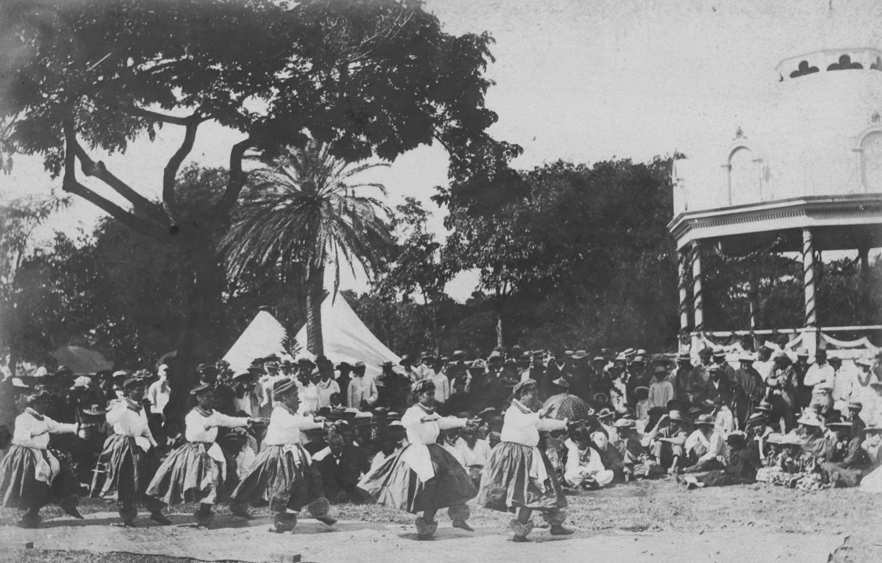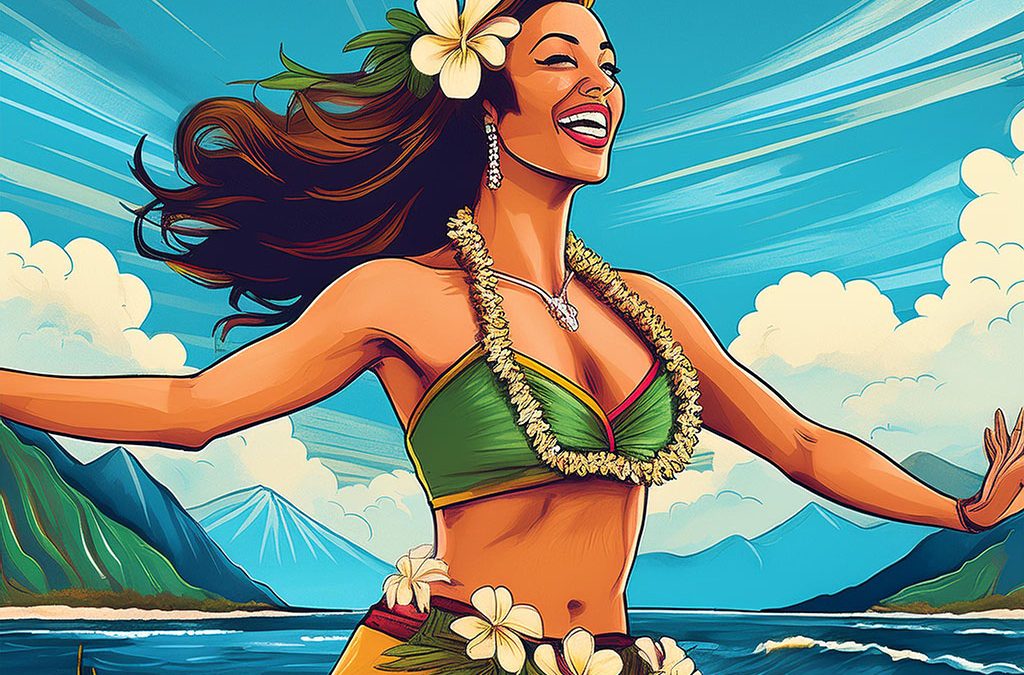The Hula dance is an exciting and vibrant tradition from Hawaii that captivates people around the world. With its graceful movements and beautiful music, the Hula is more than just a dance, it represents tradition & pride of Hawaiian culture and history. Let’s dive into what makes the Hula so special, from its roots to its modern-day adaptations!
The Hula Dance
The Hula, like all other Polynesian dances, is a dance form that uses body movements, gestures, and facial expressions to tell stories. Traditionally performed to the rhythm of Hawaiian music, the Hula can be a joyous and lively dance or a slow and solemn performance. Dancers often wear colorful costumes, including flower leis and grass skirts, which add to the visual beauty of the dance. Every movement in Hula has a specific meaning and tells part of a story. For example, swaying hips might represent the ocean waves, while hand gestures could mimic the movement of flowers or animals. These gestures, called “hula chants,” help convey the narrative of the dance, connecting the performers with their audience through a shared story.
Performances by Women
Women’s Hula often features fluid, graceful movements that emphasize the elegance of the dance. They typically wear flower leis and colorful skirts, moving their hips and hands in gentle, flowing motions to represent elements like the ocean or flowers. Their dance is known for its soft, rhythmic quality that mirrors the beauty and delicacy of Hawaiian nature.
Performances by Men
On the other hand, men’s Hula performances are generally more robust and vigorous. Men often wear traditional attire such as malo (loincloth) and a le po’o (headdress), typically made from native Hawaiian flowers and foilage. Their dance movements are strong and rhythmic, their steps are more pronounced, often mimicking the actions of warriors or celebrating the strength of nature. The difference in style highlights the diverse ways in which both men and women express their connection to Hawaiian culture through Hula.
What do you call a Hula Instructor?
In the world of Hula, a Kumu is a highly respected teacher and expert in the art of Hula dancing. The term “Kumu” means “source” or “teacher” in Hawaiian, reflecting their role in preserving and passing on the knowledge and traditions of Hula. A Kumu not only teaches dance moves but also educates students about the cultural significance and stories behind the movements.
The Tradition of the Hula and what it is Today

Hula has deep roots in Hawaiian history and tradition. It is believed that the dance was first performed by ancient Hawaiians as part of their religious ceremonies and rituals. Over time, the Hula evolved to include themes of love, nature, and daily life, making it a rich tapestry of Hawaiian storytelling. Traditional Hula is often performed in special ceremonies and celebrations, preserving its cultural significance.
Today, the Hula continues to evolve and adapt to contemporary times. Modern Hula incorporates new music styles and dance techniques while still honoring traditional elements. This fusion creates a dynamic and exciting performance that appeals to a wide audience. Modern Hula can be seen in cultural festivals, dance competitions, and even popular entertainment, showcasing its versatility and ongoing relevance. The largest of the ceremonies being the Merrie Monarch Festival, held annually on the Big Island at the end of March/beginning of April. For relevance, you could refer to this as the Olympics of Hula. It is a week long festival that is truly amazing to behold.
The Hula dance is much more than just an artistic performance at a luau, it is also significant to Hawaiians in preserving their culture. By learning and practicing the Hula, people can gain a deeper appreciation for the traditions and stories of Hawaii. Whether you are watching a performance or enjoying a modern adaptation, you are gaining knowledge of Hawaiian culture and what makes Hawaii so special to the rest of the world.

